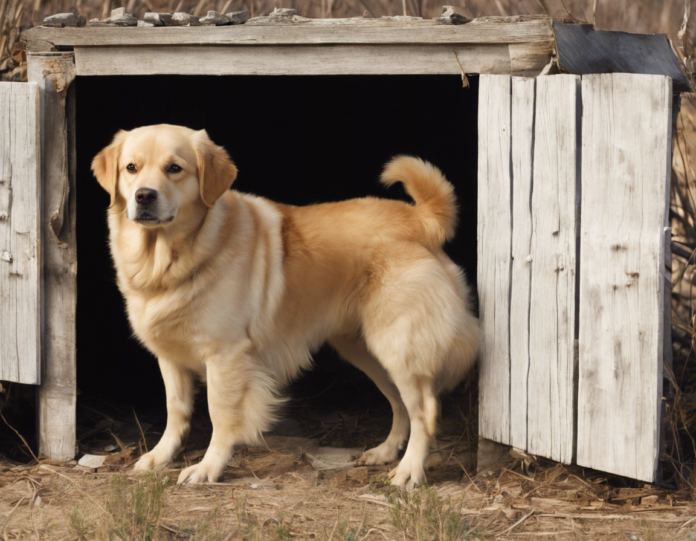Dogs, known as man’s best friend, are one of the most popular and beloved companions in households around the world. With their loyal and friendly nature, dogs have adapted to various environments over thousands of years. From wild to domesticated settings, dogs can thrive in a range of habitats. Let’s explore the habitats where dogs live and how they have evolved to fit into different environments.
Wild Habitats:
In their early evolutionary history, dogs originated from wolves, which were primarily wild animals. Wolves lived in a range of habitats, including forests, grasslands, mountains, and arctic tundra. As pack animals, wolves collaborated to hunt prey, raise offspring, and defend their territory. These wild habitats provided wolves with the resources they needed to survive, such as food, shelter, and protection from predators.
Domesticated Habitats:
Through domestication, dogs have become well-adapted to living alongside humans in various habitats. Domestic dogs can be found in urban areas, suburban neighborhoods, rural settings, and even in specialized locations like farms, police stations, and rescue centers. Dogs have successfully integrated into human societies, serving as companions, working animals, therapy pets, and more.
Domestic dogs have evolved to live in the following habitats:
1. Urban Areas:
In cities and towns, dogs coexist with humans in apartment buildings, houses, parks, and sidewalks. Urban dogs often go on walks, visit dog parks, and interact with other pets and people. They are socialized to navigate busy streets, loud noises, and crowded spaces.
2. Suburban Neighborhoods:
Suburban areas provide dogs with more space to roam, play, and exercise. With backyards, yards, and nearby parks, suburban dogs enjoy a blend of indoor and outdoor living. They may encounter wildlife like squirrels, rabbits, and birds in their neighborhood.
3. Rural Settings:
In rural regions, dogs may have larger territories to explore, including farmland, forests, and open fields. Rural dogs may act as guard dogs, herding dogs, or hunting companions, depending on their breed and training. They often have more freedom to roam off-leash and enjoy nature.
4. Specialized Locations:
Some dogs are trained to work in specialized habitats, such as police dogs in urban environments, search and rescue dogs in disaster zones, therapy dogs in hospitals, and sled dogs in arctic regions. These working dogs undergo specific training to fulfill their roles effectively.
Adaptations to Different Habitats:
Dogs have evolved various adaptations to thrive in different habitats. These adaptations include:
- Fur coat: Dogs have different types of fur coats, ranging from thick and insulating fur for cold climates to short and light fur for hot climates. Their fur helps regulate body temperature and provides protection from the elements.
- Paw pads: Dog paw pads are tough and resistant to rough terrain, hot surfaces, and cold snow. Their paw pads provide traction and insulation while walking or running.
- Senses: Dogs have keen senses of smell, hearing, and vision, allowing them to navigate their environment, detect prey or danger, and communicate with other animals.
- Behavior: Dogs exhibit social behaviors, communication signals, and hunting instincts that help them interact with other animals and survive in their habitat.
Frequently Asked Questions (FAQs):
1. Can dogs live in cold climates?
Yes, many dog breeds are well-adapted to cold climates, thanks to their thick fur coats, insulating undercoat, and body heat regulation. Breeds like Siberian Huskies, Alaskan Malamutes, and Saint Bernards excel in cold environments.
2. Do dogs need a specific type of habitat to be happy?
While dogs are versatile and adaptable animals, they thrive in environments that meet their physical and behavioral needs. Providing dogs with adequate space, exercise, socialization, mental stimulation, and care is essential for their well-being.
3. Are there dog breeds better suited for specific habitats?
Yes, certain dog breeds are better suited for particular habitats based on their physical characteristics, energy levels, and instincts. For example, Border Collies excel in rural settings due to their herding instincts, while Greyhounds thrive in open spaces for running.
4. How do dogs adapt to urban environments?
Urban dogs adapt to city life through socialization, training, leash walking, and acclimation to urban sounds and sights. They learn to navigate sidewalks, parks, traffic, and interactions with other dogs and humans.
5. Do dogs in rural areas face different challenges than dogs in urban areas?
Yes, dogs in rural areas may encounter wildlife, farm animals, longer distances for walks, and fewer veterinary services compared to dogs in urban areas. They may also have more space to roam but require protection from predators and access to clean water.
In conclusion, dogs are incredibly versatile animals that can thrive in a variety of habitats, ranging from wild environments to domestic settings. Through their evolutionary history and domestication, dogs have adapted to live alongside humans in urban, suburban, rural, and specialized locations. Understanding the diverse habitats where dogs live helps us better appreciate and care for our canine companions, ensuring they lead healthy, fulfilling lives.









